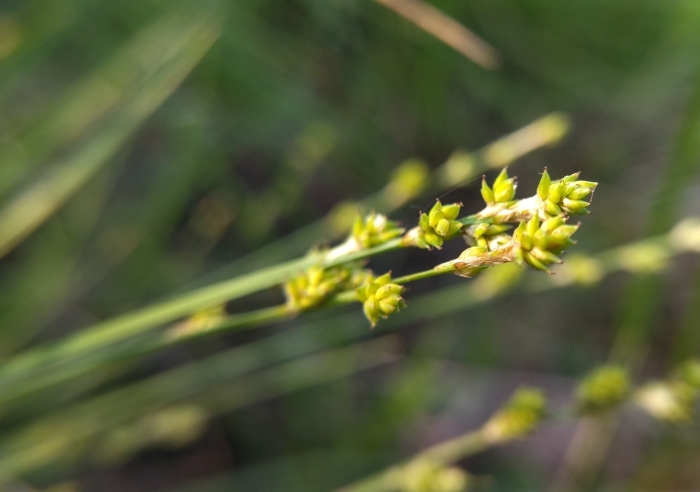Hoary Sedge
(Carex canescens)
Hoary Sedge (Carex canescens)
/
/

© Екатерина Гущина
CC BY 4.0
Image By:
© Екатерина Гущина
Recorded By:
Copyright:
CC BY 4.0
Copyright Notice:
Photo by: © Екатерина Гущина | License Type: CC BY 4.0 | License URL: http://creativecommons.org/licenses/by/4.0/ | Uploader: katto4ka | Publisher: iNaturalist |

























Estimated Native Range
Summary
Carex canescens, commonly known as hoary sedge, is a perennial herbaceous plant that belongs to the sedge family. It is native to a variety of habitats including boreal forests, fens, wet meadows, and marshes across much of Europe, Asia, and North America. This sedge typically forms dense clumps or tufts of grass-like stems and narrow leaves, reaching heights of 10-60 cm. The inflorescences are not particularly showy, with small, pale brown to silvery spikelets that appear in late spring to early summer. The plant’s foliage can provide a soft, textured effect in a garden setting.
Hoary sedge is valued for its ability to thrive in wet conditions and is often used in the restoration of wetlands and natural water filtration systems. It is also suitable for rain gardens and as a ground cover in moist, shaded areas. Carex canescens prefers partial to full shade and requires consistently moist to wet soil conditions. It is generally low-maintenance but may require division every few years to maintain vigor. While not typically afflicted by serious pests or diseases, it can become invasive if conditions are ideal, spreading through rhizomes and self-seeding.CC BY-SA 4.0
Hoary sedge is valued for its ability to thrive in wet conditions and is often used in the restoration of wetlands and natural water filtration systems. It is also suitable for rain gardens and as a ground cover in moist, shaded areas. Carex canescens prefers partial to full shade and requires consistently moist to wet soil conditions. It is generally low-maintenance but may require division every few years to maintain vigor. While not typically afflicted by serious pests or diseases, it can become invasive if conditions are ideal, spreading through rhizomes and self-seeding.CC BY-SA 4.0
Plant Description
- Plant Type: Grass
- Height: 1-1.5 feet
- Width: 1-1.5 feet
- Growth Rate: Slow
- Flower Color: N/A
- Flowering Season: Spring, Summer
- Leaf Retention: Semi-deciduous
Growth Requirements
- Sun: Full Sun, Part Shade
- Water: High
- Drainage: Fast, Medium
Common Uses
Border Plant, Erosion Control, Low Maintenance, Water Garden
Natural Habitat
native to a variety of habitats including boreal forests, fens, wet meadows, and marshes across much of Europe, Asia, and North America
Other Names
Common Names: Gray Sedge, Hoary Sedge
Scientific Names: , Carex canescens, Carex canescens f. fulvescens, Carex canescens f. subsabulosa, Carex compressa, Carex lagopina, Carex salina, Carex subsabulosa, Caricina canescens, Vignea canescens,
GBIF Accepted Name: